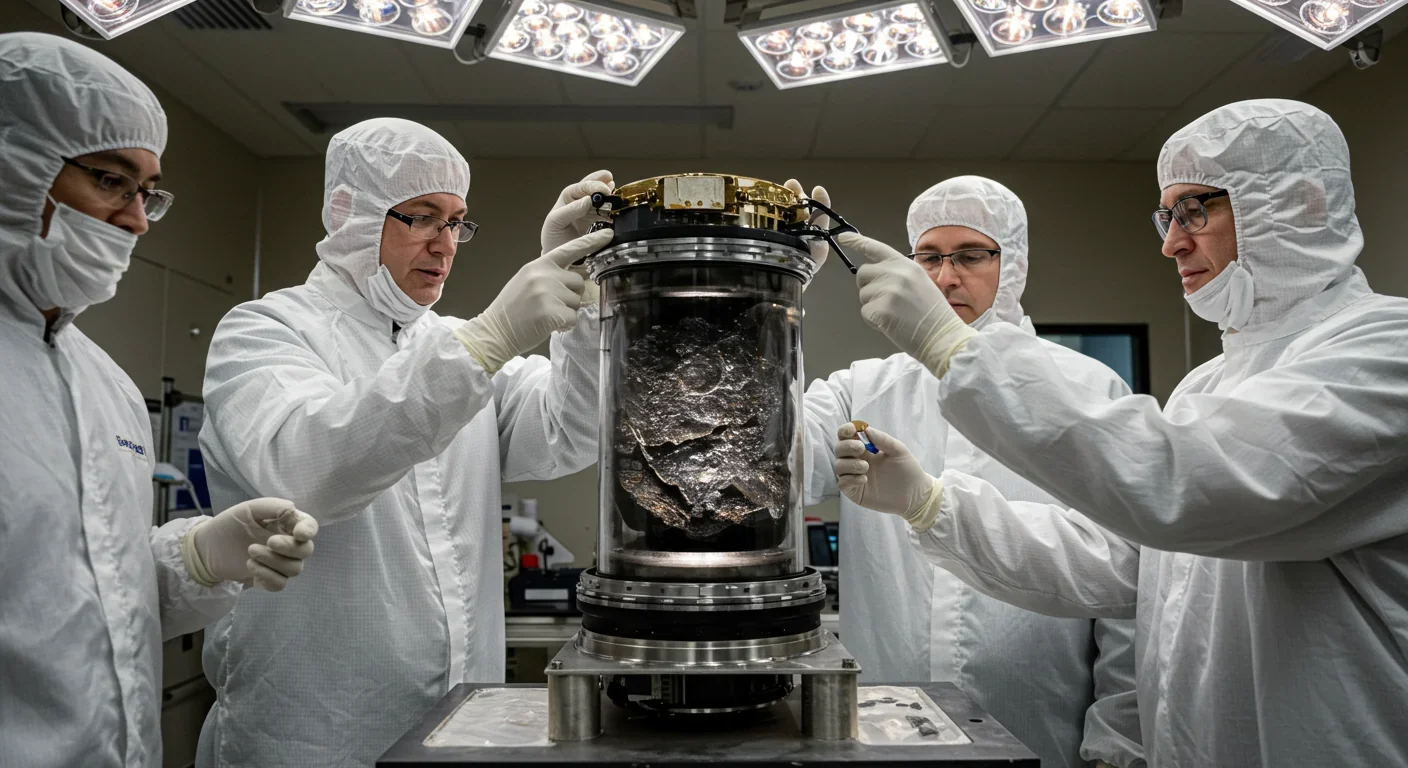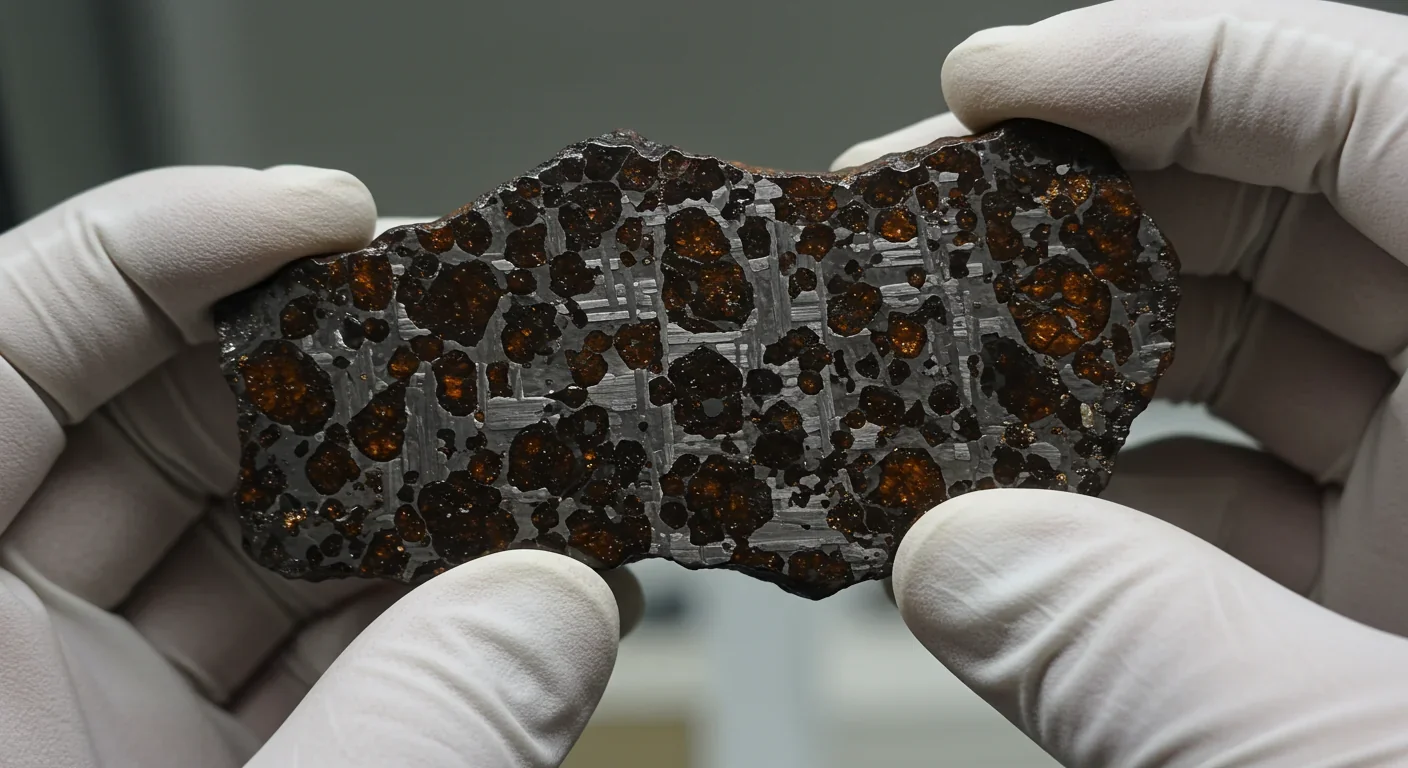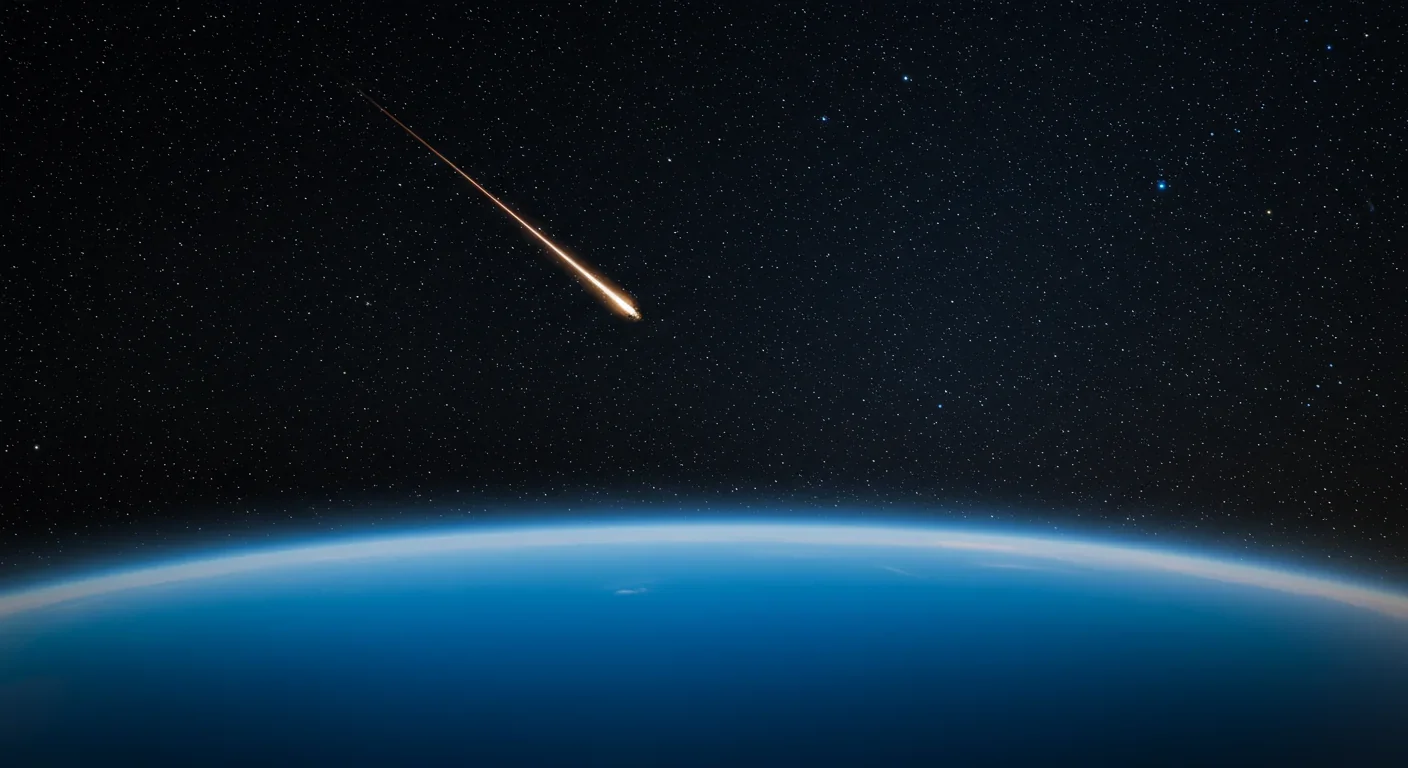Fusion Rockets Could Reach 10% Light Speed: The Breakthrough

TL;DR: Recent analysis of asteroid samples returned from space confirms that carbonaceous chondrites—water-rich meteorites—likely delivered most of Earth's oceans and organic molecules. Isotopic fingerprints match seawater perfectly, samples contain up to 20% water by weight, and evidence shows asteroid parent bodies retained liquid water for over a billion years. This discovery reshapes our understanding of how Earth became habitable and guides the search for water-rich exoplanets across the galaxy.

In 2020, a spacecraft grabbed a handful of rubble from asteroid Bennu and sealed it in a capsule. Three years later, when scientists opened that capsule in a nitrogen-filled clean room, they found something extraordinary: water-soaked minerals, amino acids, and salts—the chemical fingerprints of ancient oceans that never touched Earth. Within that cosmic handful lay evidence rewriting the story of how our blue planet got its water.
For decades, researchers have puzzled over Earth's water origins. Our planet formed in the solar system's scorching inner region, where temperatures vaporized water and other volatiles. Yet today, oceans cover 71% of our surface. Where did 1.4 billion cubic kilometers of water come from?
The answer may lie in a class of space rocks called carbonaceous chondrites—ancient meteorites packed with water-bearing minerals and organic compounds. These primitive asteroids contain up to 20% water by weight, locked inside clay minerals that formed billions of years ago when liquid water flowed through their parent bodies. Carbonaceous chondrites like Murchison, which fell in Australia in 1969, and samples recently returned from asteroids Ryugu and Bennu, preserve a chemical record of the early solar system's water inventory.
The CI and CM groups of carbonaceous chondrites are especially water-rich. CI chondrites contain 18-20% water, while CM chondrites hold 3-14%. These meteorites didn't just carry water—they transported it in hydrated minerals like cronstedtite, tochilinite, and serpentine phyllosilicates, which could survive the violent journey to Earth's surface.
Scientists can trace water's cosmic journey using deuterium, hydrogen's heavier twin. Every water molecule contains hydrogen, but about 156 out of every million hydrogen atoms in Earth's oceans are deuterium—a specific ratio called the D/H fingerprint. This ratio varies across the solar system like a chemical barcode, revealing where different water reservoirs formed.
Carbonaceous chondrites match Earth's oceanic D/H ratio remarkably well. The CI and CM subclasses show hydrogen and nitrogen isotope levels nearly identical to seawater. This isotopic similarity isn't coincidence—it's evidence that asteroidal water and Earth's oceans share a common source.
Early studies of comets suggested they carried too much deuterium to be Earth's primary water source. Comet 67P/Churyumov-Gerasimenko initially showed a D/H ratio three times higher than Earth's oceans. But in 2024, researchers discovered that dust contamination had skewed those measurements. When corrected for dust effects, comet 67P's water signature closely matches Earth's, reopening the possibility that both comets and asteroids delivered our oceans.
Recent analysis of comet 12P/Pons-Brooks using the ALMA telescope and infrared spectroscopy confirmed its water is "almost identical" to Earth's oceans. The convergence of isotopic evidence suggests multiple water sources contributed to our planet—but carbonaceous asteroids likely delivered the lion's share.
Carbonaceous chondrites aren't just water carriers—they're time capsules preserving conditions from the solar system's birth 4.6 billion years ago. These meteorites never experienced temperatures above 200°C, keeping their chemistry close to the primordial solar nebula's composition.
The Murchison meteorite exemplifies this preservation. Weighing over 100 kilograms when it fell, Murchison contains 12% water by mass and hosts an astonishing chemical diversity: more than 96 extraterrestrial amino acids, carboxylic acids, aromatic hydrocarbons, fullerenes, and even presolar silicon carbide grains older than the Sun itself—7 billion years old, according to isotopic dating.
When researchers analyzed oxygen isotopes in carbonaceous chondrites, they found distinct clusters. CI chondrites occupy a unique field enriched in oxygen-18 and oxygen-17 compared to CM chondrites, with no overlap between groups. This isotopic separation indicates different formation regions or timings in the early solar nebula, yet both groups match Earth's water composition, suggesting our planet sampled water from multiple asteroid populations.

Around 4 billion years ago, the inner solar system endured a cataclysmic pummeling. Asteroids carved massive basins into the Moon—craters we can still see today. This period, called the Late Heavy Bombardment, lasted between 20 and 200 million years and coincided with a crucial window for Earth's ocean formation.
Apollo lunar samples show similar impact melt ages of roughly 4 billion years across different locations, supporting a clustered timing of impacts. On Earth, geological layers contain spherules—tiny beads of vaporized rock—dated to 3.5 billion years, suggesting bombardment persisted beyond 4 billion years.
During this bombardment, carbonaceous asteroids from the outer asteroid belt struck Earth repeatedly. Each impact delivered not just water but also organic precursors. A single kilometer-sized carbonaceous asteroid could deliver millions of tons of water and organics. Thousands of such impacts could fill Earth's ocean basins.
Recent isotopic analysis of asteroid Ryugu samples revealed that liquid water flowed through its parent body more than a billion years after formation—far longer than previously thought. If Ryugu's parent body retained water for over a billion years, similar asteroids striking early Earth could have carried two to three times more water than standard models account for. This extended water retention means carbonaceous asteroids were even more efficient water delivery vehicles than scientists realized.
Carbonaceous chondrites didn't just deliver water—they brought the chemical ingredients for life. The Murchison meteorite contains over 90 different amino acids, including glycine, alanine, and glutamic acid, plus unusual compounds like isovaline never found in terrestrial biology. Samples returned from asteroid Ryugu contain more than 20 amino acid types.
In 2023, analysis of the Bennu sample revealed all five nucleobases required for DNA and RNA—adenine, guanine, cytosine, thymine, and uracil—along with 14 of the 20 amino acids used by life on Earth. The samples also contained exceptionally high concentrations of ammonia and formaldehyde, compounds that can react to form more complex organic molecules.
Perhaps most intriguingly, some meteoritic amino acids show left-handed excesses. In Tagish Lake meteorite samples, glutamic acid, serine, and threonine exhibited 50-99% left-handed enantiomeric excess, while alanine remained racemic. Since life on Earth uses exclusively left-handed amino acids, this chiral bias hints at extraterrestrial origins for biological homochirality.
Recent quantum simulations suggest circularly polarized Lyman-alpha radiation from young stars can preferentially destroy right-handed amino acid precursors in space, creating a left-handed excess that survives delivery to planets. This mechanism could explain why life's amino acids all share the same handedness—the preference was baked in before the first cell ever formed.
The Bennu samples contained a complete sequence of evaporite minerals—calcite, halite, sylvite, and trona—indicating sustained evaporation of salty water on the asteroid. Some minerals, like trona, had never been found in extraterrestrial samples before. This evaporite sequence reveals that liquid water persisted on Bennu's parent body for thousands of years, providing a "primordial broth" where organic molecules could interact and combine.
How did water-rich asteroids from the cold outer solar system reach Earth's scorching inner orbit? Recent models propose an elegant mechanism: a transient water-vapor disk.
When the young Sun's luminosity increased dramatically 20-30 million years after its birth, heat sublimated ice from asteroid surfaces across the asteroid belt. This created a planet-wide gaseous disk of water vapor orbiting within the asteroid belt. Over millions of years, collisions and diffusion spread this vapor inward toward Earth's orbit, where it condensed and was captured by the growing planet's gravity.
This impact-free delivery mechanism explains several mysteries. It matches the isotopic fingerprint of Earth's oceans with carbonaceous chondrites. It accounts for water delivery timing—most water arrived 20-30 million years after solar system formation, consistent with geological evidence. And it could be observed in young exoplanetary systems using telescopes like ALMA, providing a test for the hypothesis.
But impacts also mattered. Geochemical evidence indicates that while Earth's bulk formed quickly—within 3 million years—it started dry. The planet's baseline chemistry was set by high-temperature condensation that excluded volatiles. Then, likely around 4.5 billion years ago, a Mars-sized body called Theia collided with Earth. This impact not only formed the Moon but also delivered a crucial payload of water and organics, making the planet habitable.
The truth is likely hybrid: Earth's water came from multiple sources over an extended period. Vapor diffusion from sublimating asteroids delivered a steady background supply, punctuated by large impacts that added volatile-rich material. Together, these mechanisms transformed a dry, molten world into the blue planet.

Understanding how Earth got its water reshapes how we search for habitable exoplanets. A planet's habitability doesn't depend solely on orbit—it crucially depends on whether and when it receives volatile-rich impacts or vapor from a water-bearing disk.
Two Earth-sized planets in the same star's habitable zone could have vastly different fates. One might receive abundant carbonaceous asteroid impacts and develop oceans. The other, shielded from bombardment or lacking nearby water-rich bodies, could remain dry and lifeless. Location matters, but so does timing and delivery mechanisms.
Hot Jupiter migration offers another water delivery pathway. Simulations show that when a giant planet migrates inward through the protoplanetary disk, it doesn't destroy everything—over 60% of solid materials scatter outward, allowing water-rich planetesimals to reach the habitable zone. After the hot Jupiter settles, terrestrial planets can form from these scattered materials, potentially becoming water-rich worlds.
Detection of water vapor on large C-type asteroids like Ceres in 2014 confirmed that asteroid-belt bodies retain volatiles, supporting the idea that such objects universally contribute to planetary water budgets. Main-belt comets, which show lower D/H ratios than classical comets, may represent a crucial water source for inner planets across many star systems.
Future missions will test these ideas. NASA and ESA plan asteroid sample-return missions targeting different carbonaceous bodies. The James Webb Space Telescope can detect water vapor in exoplanet atmospheres and potentially observe protoplanetary water-vapor disks around young stars. Each observation refines our understanding of water delivery across the cosmos.
Carbonaceous asteroids aren't just ancient history—they're future resources. Asteroid water represents a strategic asset for deep-space exploration, offering propellant, radiation shielding, and life support without launching it from Earth's gravity well.
The OSIRIS-REx mission demonstrated we can rendezvous with asteroids and return samples. Future missions could extract water from carbonaceous asteroids at scale. A single 500-meter carbonaceous asteroid might contain more water than some terrestrial reservoirs—enough to fuel hundreds of missions or support permanent space infrastructure.
Near-Earth asteroids like Bennu orbit close enough for relatively easy access. Spectroscopic surveys reveal dozens of water-bearing carbonaceous asteroids in near-Earth space. Some asteroids even exhibit active outgassing, releasing water vapor that could be captured directly.
Analysis of Bennu's Yarkovsky effect—thermal forces that alter its orbit—shows how these small bodies evolve. The measured drift of 284 meters per year in Bennu's orbit demonstrates that asteroid trajectories can be predicted and potentially controlled, essential knowledge for future resource extraction.
The emerging picture transforms our view of the solar system. Water isn't rare—it's common throughout the asteroid belt and beyond. Carbonaceous chondrites preserve this primordial water inventory, delivering it across billions of years to any planet or moon in their path.
Recent discoveries show that water retention on asteroids lasts far longer than previously thought. Ryugu's parent body held liquid water for over a billion years after formation. This extended habitability window suggests that asteroids themselves might host prebiotic chemistry, not just deliver ingredients to planets.
The discovery of phosphates in Bennu samples—minerals not typically found in Murchison—hints at compositional diversity within carbonaceous asteroids. Different parent bodies experienced different aqueous alteration histories, producing varied mineral assemblages. This heterogeneity means that the "carbonaceous chondrite" category encompasses a range of water-delivery vehicles, each with distinct characteristics.
Principal component analysis of 42 carbonaceous chondrite samples, including returned Ryugu and Bennu materials, revealed distinct chemical groupings. Ryugu samples form a potentially unique subgroup, while Bennu fits within the C2-ung classification. These differences reflect parent-body heterogeneity—spatial variations in organics and minerals within single asteroids—implying that meteorite-delivered organic inventories to Earth were highly variable.
Every meteorite that falls to Earth carries a message from the solar system's birth. Carbonaceous chondrites tell a story of water's cosmic journey—from ice condensing in the cold outer nebula, through asteroid parent bodies where liquid water flowed for millions of years, to violent impacts on young Earth that filled ocean basins and seeded the chemistry of life.
The isotopic fingerprints match. The mineralogy makes sense. The timing aligns with geological evidence. The organic inventory includes life's building blocks. All roads point to carbonaceous asteroids as primary water delivery vehicles for Earth.
But mysteries remain. How much water came from vapor diffusion versus impacts? Did comets contribute more than currently estimated? When exactly did the main water delivery occur—during Earth's formation or hundreds of millions of years later? Could life have originated on asteroids before reaching Earth?
Future sample-return missions will refine these answers. Laboratory analysis of pristine asteroid materials, shielded from terrestrial contamination, will reveal precise isotopic ratios, organic inventories, and mineral assemblages. Telescopic observations of young exoplanetary systems will test whether water-vapor disks exist around other stars. And continued study of meteorites already in our collections will extract new insights using ever-improving analytical techniques.
The next time you see a meteor streak across the night sky, remember: similar rocks once carried the water in your body. The oceans in your cells arrived on asteroids, traveled billions of miles across four billion years, and now enable you to read these words. Every drop you drink connects you to the solar system's ancient past—a cosmic ocean delivered from the stars, one meteorite at a time.
Earth's water story is ultimately humanity's story. Understanding how our planet became habitable informs the search for life elsewhere and guides our expansion into space. As we venture outward, we'll tap the same asteroid resources that once watered Earth, using ancient ice to fuel the next chapter of exploration. The meteorites that delivered our oceans will supply the water for future civilizations among the stars.

Recent breakthroughs in fusion technology—including 351,000-gauss magnetic fields, AI-driven plasma diagnostics, and net energy gain at the National Ignition Facility—are transforming fusion propulsion from science fiction to engineering frontier. Scientists now have a realistic pathway to accelerate spacecraft to 10% of light speed, enabling a 43-year journey to Alpha Centauri. While challenges remain in miniaturization, neutron management, and sustained operation, the physics barriers have ...

Epigenetic clocks measure DNA methylation patterns to calculate biological age, which predicts disease risk up to 30 years before symptoms appear. Landmark studies show that accelerated epigenetic aging forecasts cardiovascular disease, diabetes, and neurodegeneration with remarkable accuracy. Lifestyle interventions—Mediterranean diet, structured exercise, quality sleep, stress management—can measurably reverse biological aging, reducing epigenetic age by 1-2 years within months. Commercial ...

Data centers consumed 415 terawatt-hours of electricity in 2024 and will nearly double that by 2030, driven by AI's insatiable energy appetite. Despite tech giants' renewable pledges, actual emissions are up to 662% higher than reported due to accounting loopholes. A digital pollution tax—similar to Europe's carbon border tariff—could finally force the industry to invest in efficiency technologies like liquid cooling, waste heat recovery, and time-matched renewable power, transforming volunta...

Humans are hardwired to see invisible agents—gods, ghosts, conspiracies—thanks to the Hyperactive Agency Detection Device (HADD), an evolutionary survival mechanism that favored false alarms over fatal misses. This cognitive bias, rooted in brain regions like the temporoparietal junction and medial prefrontal cortex, generates religious beliefs, animistic worldviews, and conspiracy theories across all cultures. Understanding HADD doesn't eliminate belief, but it helps us recognize when our pa...

The bombardier beetle has perfected a chemical defense system that human engineers are still trying to replicate: a two-chamber micro-combustion engine that mixes hydroquinone and hydrogen peroxide to create explosive 100°C sprays at up to 500 pulses per second, aimed with 270-degree precision. This tiny insect's biochemical marvel is inspiring revolutionary technologies in aerospace propulsion, pharmaceutical delivery, and fire suppression. By 2030, beetle-inspired systems could position sat...

The U.S. faces a catastrophic care worker shortage driven by poverty-level wages, overwhelming burnout, and systemic undervaluation. With 99% of nursing homes hiring and 9.7 million openings projected by 2034, the crisis threatens patient safety, family stability, and economic productivity. Evidence-based solutions—wage reforms, streamlined training, technology integration, and policy enforcement—exist and work, but require sustained political will and cultural recognition that caregiving is ...

Every major AI model was trained on copyrighted text scraped without permission, triggering billion-dollar lawsuits and forcing a reckoning between innovation and creator rights. The future depends on finding balance between transformative AI development and fair compensation for the people whose work fuels it.